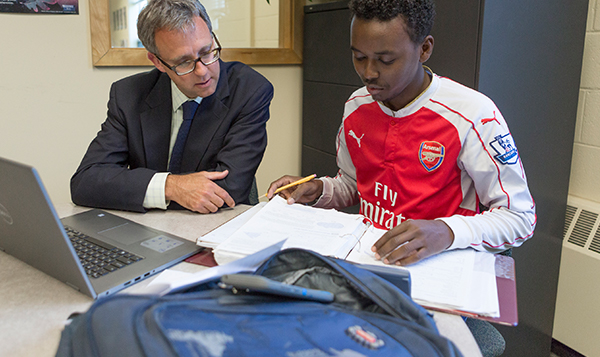Pursuing higher education is an important and exciting milestone, but figuring out how to pay for it responsibly can feel overwhelming. We believe that with the right information, tools, and support, families can make informed choices about how to plan and pay for higher education.
Paying for college is like putting together the parts of a puzzle: many Maine families use a combination of savings, financial aid, and loans to afford higher education. Before you consider borrowing to pay for college, here are some things to consider.
Determine If You Need to Borrow
Steps to Take Before You Borrow
Follow these six steps before you apply for a loan. By doing so, you’ll be sure you’ve done everything you can to minimize the amount you’ll borrow, and may even find that you won’t have to borrow at all.
Step 1: Make Your Money Work
Successful money management can bring independence, new opportunities, and a clear path to your goals. Download FAME’s free guide, BUILD: Steps to Financial Wellness, for lots of good information and tips to get started.
Step 2: Lower Your Costs
There are things you can do to help lower your costs for education after high school. See FAME’s Ideas for Reducing Expenses to learn how.
Step 3: Maximize the Money You Don’t Have to Repay
It’s also important to make the most of the ways to pay for college that don’t involve borrowing money. It’s never too late to start a savings plan, apply for financial aid, and look into your college’s tuition payment plan that allows you to pay your tuition in installments over the semester or year.
Step 4: Apply for Scholarships or Grants
Scholarships and grants are gift aid that does not need to be repaid. Search for a scholarship using our Maine Scholarship Search or apply for federal grants.
Step 5: Complete the FAFSA Application
There is money available through financial aid to help you pay for college. The first step is to apply for financial aid by filing the Free Application for Federal Student Aid (FAFSA). The FAFSA is used by schools to determine eligibility for federal and state financial aid. Many schools also use the FAFSA to determine eligibility for their own need-based financial aid.
Step 6: Become a More Informed Borrower
If you’ve done each of the steps above and find there is a gap that needs to be filled by borrowing, your next step is to become a more informed borrower by visiting Getting Ready to Borrow.
FAME’s Student Loan/Salary Calculator
Use FAME’s Student Loan/Salary Calculator to make sure you can afford to repay what you will be borrowing. It can help you figure out how much you should borrow based on expected future earnings.
Federal Direct PLUS Loan
If your parent prefers to borrow an education loan on your behalf, consider the Federal Direct PLUS Loan. Federal Direct PLUS Loans may be a more expensive option, but flexible repayment terms may offset the cost.






